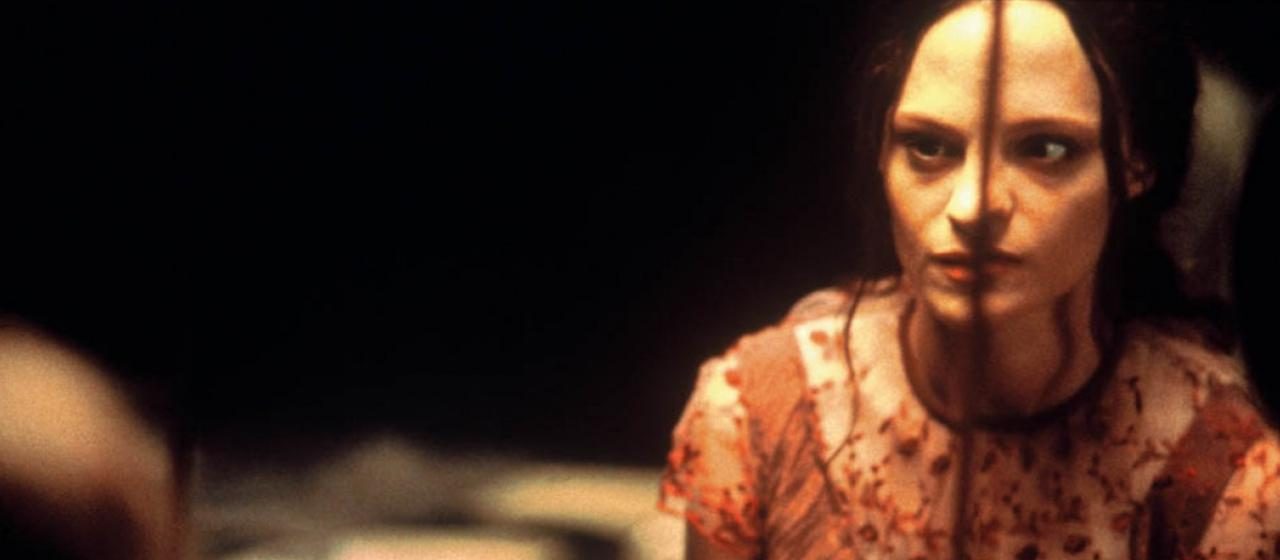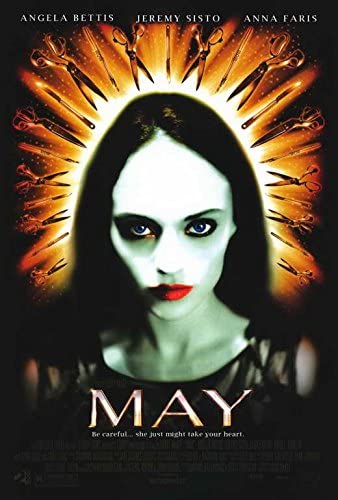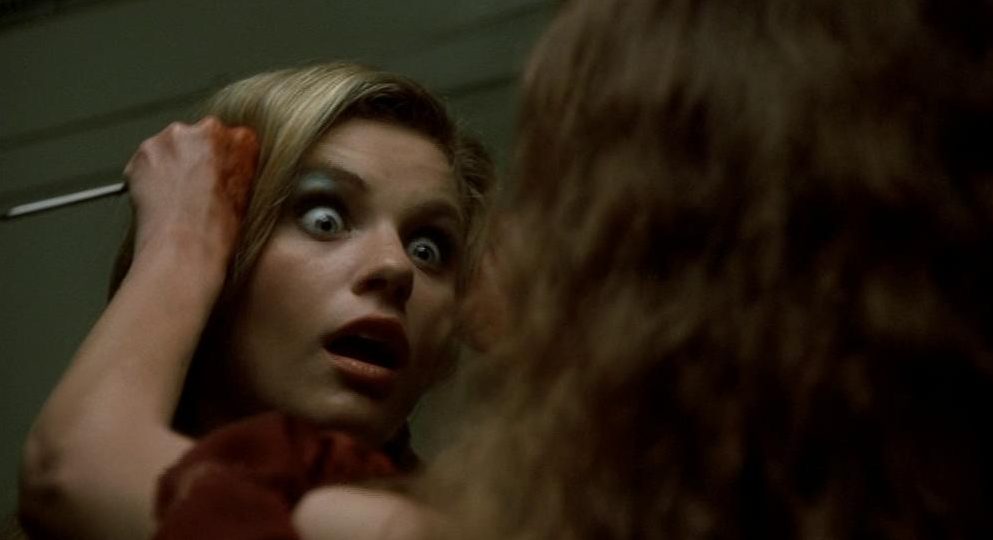

“If you can’t find a friend, make one.”
One could offer a shallow critique of May by simply listing all of its surface level influences—Ms .45, Dario Argento, Frankenstein, any number of chintzy teenage romcoms. It wears these inspirations on its sleeve. Argento is even explicitly called out in the film, twice. But, as King Solomon deduced millennia ago, there’s nothing new under the sun. New ideas are rare and great works do not need to be singular to have merit. In any case, to dismiss May on the grounds of its obvious lineage would be disingenuous. It bounces around within genre and narrative confines but provides a refreshing experience by developing an off-kilter tone and twisting its charmingly awkward eponymous character into a diabolical villain. In many instances I found it difficult to watch; not because it was poorly made, but because it was deliberately crafted to make the viewer feel uncomfortable. By initially hiding his psychopathic protagonist behind a pitifully introverted façade, Lucky McKee is able to successfully pull off a fiendish one-two punch when she transforms into a vicious slayer of the beautiful people who have rejected her.
Angela Bettis gives a monumental performance as May, a consummately weird outcast who is alienated from a young age due to her lazy eye. After an early glimpse of the adult May cupping her eye socket and screaming as blood spills through her fingers, we jump back to her childhood, when her only friend was a crudely made doll named Suzy (her only attempt at making human friends results in a classmate asking if she is wearing a patch over her eye because she is a pirate). Her social life is no less bleak as an adult—maybe more so due to the lack of forced interaction that she had at school. Now a woman, she has found steady employment at a veterinarian’s office where she has a hand in all manner of invasive surgeries. She works with a loopy receptionist named Polly (Anna Faris) and faces a steady stream of bizarre customers including a young man who is beside himself over the fact that his dog is suddenly missing a leg and cannot play fetch (a nod to Billy In 4C?). There’s a recurring gag where Polly cannot understand the doctor’s (Ken Davitian) requests because of his thick accent so she will jot them down phonetically and then ask for May’s help.

Eventually May swaps her corrective glasses for a set of contact lenses and this gives her the confidence to go on a “date.” What actually happens is she intentionally crosses paths with a grungy mechanic that she’s been dreaming about for a while because he has nice hands. Adam (Jeremy Sisto) doesn’t even notice her when they pass in a crosswalk, and it’s not until he falls asleep at a cafe and May caresses her own face with his open palm that the two are introduced. Without the opening snippet informing us that our protagonist is a mentally unstable psychopath, we may have been fooled into thinking we’re watching a spunky teen comedy. But we know what lies ahead and so our interest remains piqued through May’s painful romantic pursuits and cringe-inducing attempts at making personal connections. Even when she volunteers at a daycare center for blind children—a group whose ostracization should dwarf her own—she struggles to comport herself.
And so, like May’s homemade clothes, McKee weaves a quirky rug beneath the viewer in anticipation of ripping it out. There are certainly signs that May is a loose cannon. There’s a moment where Polly spies her jabbing at her own thumb with a scalpel. She giggles as she recounts a story of a black lab’s stomach bursting open post-op because they didn’t use the proper sutures. She reads a book on amputation “for fun.” She thinks Adam’s student film depicting cannibalism is “sweet.” The writing and direction are solid but pale in comparison to Bettis’s intricate work that meanders from silly to terrifying to charming to pitiable with ease.

If the buildup occasionally feels tiresome, when the dam bursts it lets forth a tidal wave of blood. Rejected by Adam, May invites a punk boy (James Duval) to her house. Like Adam and his hands and Polly and her neck, May is only attracted to the punk because of a specific physical attribute, namely his tattoo. He’s a freaky dude, quickly shedding his clothing because of the heat and asking if he can grab some ice cubes to rub on his nipples. That’s when he discovers the dead cat in May’s freezer. “You’re a freak!” he screams at her. She snaps and jabs a pair of scissors into his forehead. A slickly edited montage prolongs the death, then May says to herself, “I need more parts.” All those legs and ears and hands that she’s found herself attracted to can be assembled into the ultimate friend—and we already know the lens through which her heinous creation will see her.
Clearly aware of its antecedents, May would not work if it did not keep its tongue planted firmly in its cheek. That offbeat tone works against the director’s aims at times, but despite a few wobbles, the tricky balance between tenderness and the macabre is maintained throughout, only tipped entirely to the latter in the finale. Rarely do slasher movies take such pains to develop sympathy for a murderer, which only makes the killing spree all the more affecting.